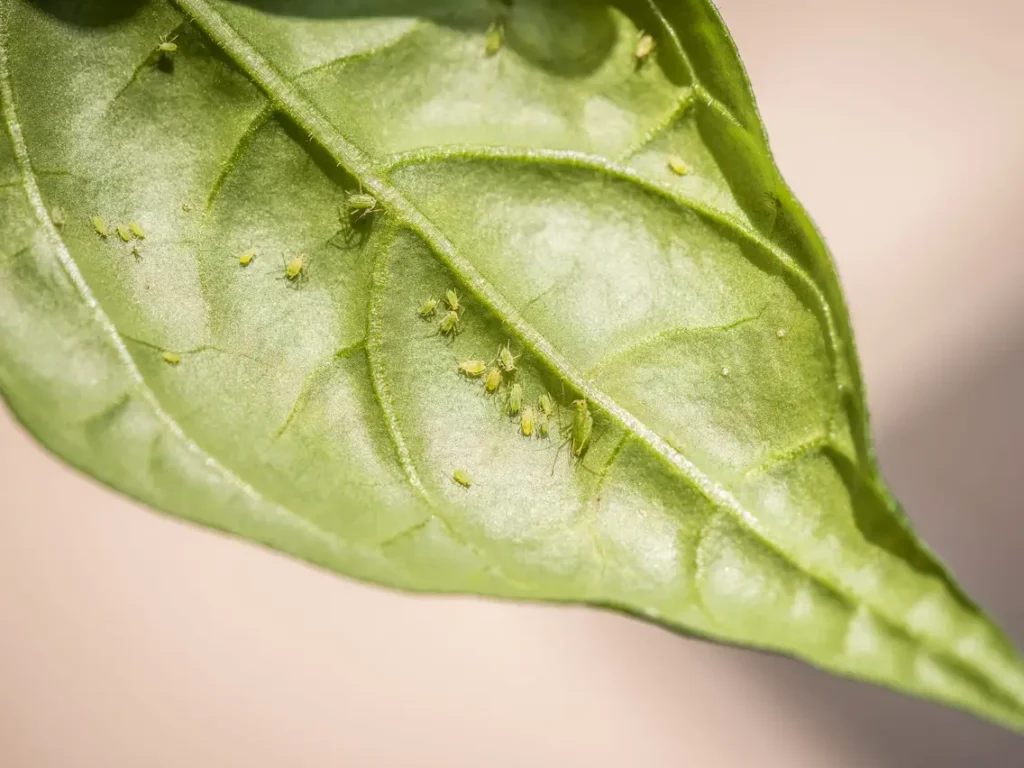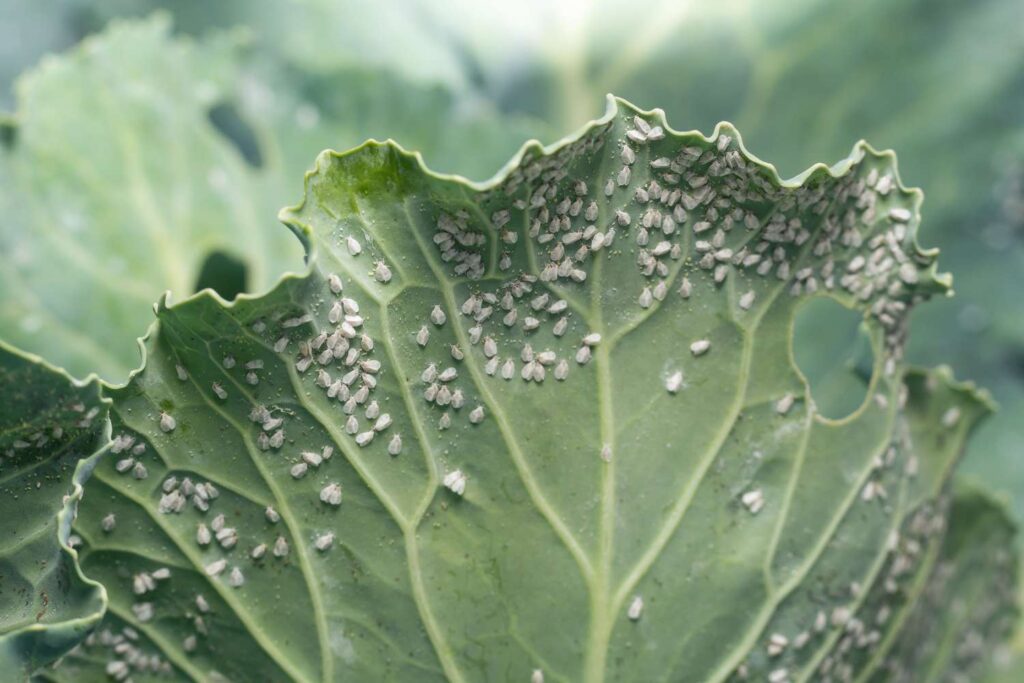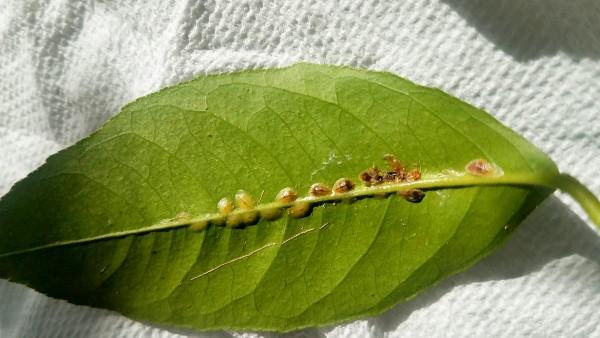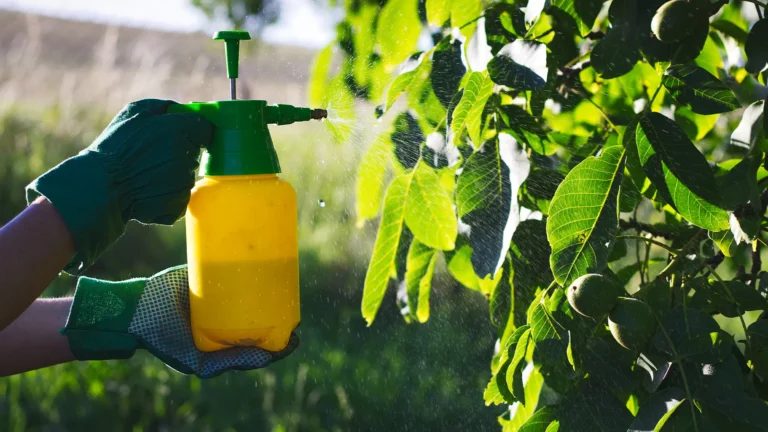Contents
Introduction
Insecticidal soap might sound like a fancy term, but it’s actually a simple and effective way to handle pesky bugs on your indoor plants. If you’ve noticed little critters munching away on your beloved houseplants or causing your leaves to look less than perfect, insecticidal soap could be just what you need. This soap isn’t like your regular household soap—it’s specially designed to tackle those annoying bugs without harming your plants.
So, why should you care about using insecticidal soap? For one, it’s a gentle, eco-friendly option that can help keep your indoor garden healthy and thriving. It works by targeting the soft-bodied insects that often invade houseplants, such as aphids, whiteflies, spider mites, and scale insects. These pests can quickly become a big problem if not managed properly, leading to unhealthy plants and a less vibrant home garden.
But here’s the thing: using insecticidal soap isn’t just a “spray and forget” situation. To get the best results and avoid any potential plant damage, you need to follow a few simple steps. This guide will walk you through everything you need to know, from choosing the right product and applying it correctly to monitoring your plants afterward.
By the end of this guide, you’ll be equipped with all the knowledge you need to use insecticidal soap safely and effectively, ensuring your indoor plants stay happy and healthy. Plus, we’ll throw in some tips on how to spot and handle common issues, so you can tackle any pest problem with confidence. Let’s get started on keeping those pesky bugs at bay and your plants looking their best!
Understanding Insecticidal Soap
If you’re new to insecticidal soap, you might be wondering what all the fuss is about. In simple terms, insecticidal soap is a special type of soap designed to kill insects that bother your plants. It’s different from the soap you use to wash your dishes because it’s made specifically for pest control. Think of it as a gentle, plant-friendly solution for those little bugs that love to feast on your greenery.
What Exactly Is Insecticidal Soap?
Insecticidal soap is usually made from natural plant oils and fats combined with potassium salts. These ingredients create a soap that’s tough on bugs but easy on your plants. When you spray it on your plants, the soap breaks down the outer layer of soft-bodied insects, causing them to dehydrate and die. It’s a bit like how soap can help you clean your hands by breaking down grease and dirt.
How Does It Work?
The soap works by disrupting the outer layer of the insects’ bodies. This outer layer is crucial for their survival because it helps keep their insides in and harmful stuff out. When the soap hits the pests, it breaks down this protective layer, causing the insects to dry out and die. It’s a quick and effective way to deal with bugs without needing harsh chemicals.
Different Types of Insecticidal Soap
There are a few different options when it comes to insecticidal soap. You can buy it ready-to-use in spray bottles, or you might find it as a concentrate that you mix with water. Some folks even make their own at home using simple ingredients. If you prefer the DIY route, just make sure to follow a reliable recipe and use it carefully.
Commercial vs. Homemade
- Commercial ProductsThese are convenient and often come with clear instructions. They’re formulated to be effective and safe for a range of indoor plants.
- Homemade SolutionsMaking your own insecticidal soap can be a cost-effective choice. Just be sure to use the right ingredients and proportions to avoid any damage to your plants.
Formulations
Insecticidal soap comes in various forms, including liquid concentrates and ready-to-use sprays. Liquid concentrates need to be mixed with water before use, while ready-to-use sprays can be applied directly. Each type has its benefits, depending on your preferences and needs.
Understanding insecticidal soap is the first step to using it effectively. With its natural ingredients and easy application, it’s a great choice for keeping indoor pests under control. Just remember to use it correctly, and you’ll be on your way to a healthier, happier indoor garden.
Identifying Pests That Insecticidal Soap Targets
If you’ve got indoor plants, you might have run into some unwelcome guests: pests. These tiny critters can cause big problems for your plants, but the good news is that insecticidal soap can help manage them. To use it effectively, it’s important to know which pests it targets and how to spot them. Here’s a quick rundown of the common bugs that insecticidal soap can help with and the signs you might see.
Common Pests Treated by Insecticidal Soap
- Aphids Aphids are small, soft-bodied insects that come in various colors, like green, black, or yellow. They often cluster on the undersides of leaves and suck out plant juices, causing leaves to curl and yellow. If you see these tiny bugs or notice sticky residue on your plants, you might be dealing with aphids.

- Whiteflies Whiteflies are tiny, white-winged insects that look like small moths. They tend to hang out on the underside of leaves and can cause the same kinds of problems as aphids. If you see a cloud of tiny white flies fluttering when you disturb your plants, whiteflies might be the culprit.

- Spider Mites These are tiny, spider-like pests that are often hard to see without a magnifying glass. They make tiny webs and can cause leaves to become speckled, discolored, or even drop off. If your plant leaves look dusty or have a fine webbing on them, spider mites might be causing the trouble.
- Scale Insects Scale insects appear as small, round, or oval bumps on stems and leaves. They can be hard to spot because they blend in with the plant. These pests suck sap from the plant and can cause stunted growth. Look for small, waxy bumps on your plant’s stems and leaves.

Symptoms of Infestation
- Visible Signs One of the easiest ways to spot pests is to look for visible damage on your plants. Common symptoms include yellowing or wilting leaves, sticky residue on surfaces, and the presence of small, moving insects. If your plants seem unhealthy or you notice unusual spots or webs, it might be time to check for pests.
- Plant Health Issues Infested plants might not only look bad but also show signs of stress. Leaves might curl, become misshapen, or fall off prematurely. In severe cases, the plant’s growth might slow down or stop altogether. Keep an eye on any changes in your plants’ appearance or growth to catch pest problems early.
Identifying the pests that are bothering your plants is key to using insecticidal soap effectively. By knowing what to look for and understanding the signs of infestation, you can take action quickly and keep your indoor garden in top shape.
Preparing to Use Insecticidal Soap
Now that you know what insecticidal soap is and which pests it targets, it’s time to get ready to use it. Proper preparation is crucial to ensure that you get the best results and keep your plants healthy. Here’s how to get set up for a successful application.
Choosing the Right Product
- Read Labels When selecting insecticidal soap, the first thing you should do is read the label carefully. Look for products that are specifically designed for indoor plants. These products are formulated to be gentle on your indoor greenery while still effective against pests. Avoid any products that don’t clearly state they are safe for indoor use.
- Check Ingredients Take a look at the ingredients list to make sure it contains natural, plant-based oils and fats, along with potassium salts. These are the key components that help target and kill pests without harming your plants. If you’re unsure about any of the ingredients, a quick online search can help you understand what they do.
Testing for Sensitivity
- Patch TestBefore you go all-in with the soap, it’s smart to do a patch test. This means applying a small amount of the soap to a small, inconspicuous part of your plant. Wait 24 hours and check to see if there’s any negative reaction, such as wilting or discoloration. If the plant looks fine, you can proceed with a full application.
Gathering Supplies
- Essential ToolsMake sure you have everything you need before you start spraying. Here’s a basic list of supplies:
- Spray Bottle: For applying the insecticidal soap, especially if you’re using a concentrate that needs to be mixed with water.
- Gloves: To protect your hands from the soap and any potential irritation.
- Protective Eyewear: To keep the soap from getting into your eyes, especially if you’re spraying large plants.
- Measuring Tools: If you’re using a concentrate, you’ll need measuring tools to mix the right amount of soap with water.
Preparing properly will set you up for success and help you apply insecticidal soap effectively. By choosing the right product, doing a patch test, and gathering the necessary supplies, you’ll be ready to tackle those pests and keep your indoor plants looking their best.
Application Techniques
With your insecticidal soap and supplies ready, it’s time to put everything into action. Proper application is key to making sure you deal with those pesky bugs without causing any harm to your plants. Here’s a straightforward guide to help you apply insecticidal soap effectively.
Step-by-Step Instructions
- Dilution and Mixing If you’re using a concentrate, you’ll need to mix it with water. Follow the instructions on the product label for the correct ratio. Typically, you’ll mix a specific amount of concentrate with a certain amount of water. Use a clean container for mixing, and make sure to stir well to ensure the soap is fully dissolved.
- Application Method
- Spraying Pour the mixed solution into a spray bottle. Hold the bottle about 6-12 inches away from your plant and spray evenly over the entire surface, including the undersides of leaves where pests like to hide. Make sure to cover all affected areas thoroughly. It’s best to do this in a well-ventilated area or outdoors if possible, to avoid inhaling the spray.
- Avoiding Common Mistakes
- Don’t Over-Saturate: Applying too much soap can harm your plants. Aim for a light, even coating rather than soaking the plant.
- Don’t Spray in Direct Sunlight: Applying soap in direct sunlight can cause leaf burn. Choose a cooler part of the day or a shaded area for spraying.
- Avoid Spraying on Wet Leaves: Make sure your plant leaves are dry before applying the soap to avoid diluting the solution and reducing its effectiveness.
Timing and Frequency
- Best Time to Apply The ideal time to apply insecticidal soap is in the early morning or late evening. This helps avoid the heat of the day, which can cause the soap to dry too quickly and potentially damage your plants. Also, applying in these cooler periods reduces the chance of harming beneficial insects that might be active during the day.
- Reapplication Schedule Depending on the severity of the pest problem, you might need to reapply the soap. Generally, reapply every 7-10 days or as directed on the product label. Regular applications help ensure that any new pests that emerge are also dealt with. Always follow the specific recommendations on your product for the best results.
Following these steps will help you apply insecticidal soap effectively and keep your indoor plants free from pests. With careful application and regular monitoring, you’ll be able to manage those unwanted critters and keep your greenery healthy and vibrant.
Post-Application Care
Once you’ve applied insecticidal soap to your plants, there are a few important steps to follow to ensure everything goes smoothly. Post-application care is crucial for monitoring the health of your plants and maintaining their well-being. Here’s what you need to do after spraying your plants.
Monitoring Plant Response
- Checking for Damage After application, keep an eye on your plants for any signs of damage. Look for changes like wilting, leaf curl, or discoloration. While insecticidal soap is generally safe for plants, it’s still important to watch for any adverse reactions. If you notice any damage, it could be due to over-application or sensitivity, and you might need to adjust your approach.
- Evaluating Effectiveness Assess whether the insecticidal soap is working by checking for a reduction in pests. Look for fewer bugs on the plant and monitor the plant’s overall health. It might take a few days to see results, so be patient. If the pest problem persists or worsens, you may need to reapply the soap or explore additional pest control methods.
Cleaning and Maintenance
- Washing the Plant If there’s any excess soap on the plant after application, it’s a good idea to rinse it off. This helps prevent any potential buildup that could affect the plant’s health. Use lukewarm water and a gentle spray to wash off any remaining soap, especially if you’ve applied it heavily.
- Cleaning Equipment After using insecticidal soap, make sure to clean your spray bottle and any other tools you used. Wash them thoroughly with water and soap to remove any residual insecticidal soap. This ensures that your equipment stays in good condition and is ready for future use.
Taking these post-application steps helps ensure that your plants stay healthy and that your pest control efforts are successful. By monitoring your plants closely and maintaining your equipment, you’ll be able to keep your indoor garden thriving and free from unwanted pests.
Troubleshooting
Even with the best preparation and application techniques, you might run into some issues when using insecticidal soap. Don’t worry—most problems have simple solutions. Here’s how to troubleshoot common issues and keep your indoor plants in top shape.
Common Issues and Solutions
- Soap Residue Problem: After spraying, you might notice a sticky or soapy residue on your plants or around the area where you applied the soap. Solution: If you see excess soap residue, gently rinse the affected areas with lukewarm water to remove it. This helps prevent any buildup that could potentially harm your plants. Make sure to rinse thoroughly to ensure all the soap is washed away.
- Plant Sensitivity Problem: Sometimes, plants may react negatively to the soap, showing signs like leaf burn, curling, or discoloration. Solution: If you notice these symptoms, it’s possible you used too much soap or applied it in direct sunlight. Adjust your application method by using a lighter coating and applying during cooler times of the day. If the issue persists, consider reducing the concentration of the soap or switching to a milder product.
Alternatives and Supplements
- Other Pest Control Methods If insecticidal soap isn’t completely effective against your pest problem, there are other options you can consider:
- Neem Oil: This natural oil helps with a variety of pests and is gentle on plants.
- Insecticidal Sprays: Look for products specifically designed for the pests you’re dealing with.
- Beneficial Insects: Introducing natural predators like ladybugs or lacewings can help control pest populations.
- Integrated Pest Management (IPM) Overview: IPM combines various pest control methods for a more comprehensive approach. This might include using physical barriers, changing plant care routines, or employing biological controls. When to Use: Consider IPM strategies if you have ongoing or severe pest issues that aren’t fully resolved with insecticidal soap alone.
By addressing these common issues and exploring alternative methods, you can effectively manage pests and keep your indoor plants healthy. Troubleshooting and being flexible with your approach will help you maintain a thriving indoor garden.
Safety and Environmental Considerations
When using insecticidal soap, it’s important to keep safety and environmental impact in mind. Ensuring that you use the product responsibly helps protect both your household and the planet. Here’s how to stay safe and make eco-friendly choices while using insecticidal soap on your indoor plants.
Safety Precautions for Humans and Pets
- Avoiding Inhalation and Skin Contact Precaution: Insecticidal soap is generally safe, but it’s best to avoid breathing in the spray or getting it on your skin. Tips: Wear gloves and protective eyewear when applying the soap. Apply the soap in a well-ventilated area or open windows to ensure good air circulation. If you accidentally get some on your skin, wash it off with soap and water.
- Pet Safety Precaution: Even though insecticidal soap is plant-friendly, pets might still be sensitive to it, especially if they come into direct contact with freshly sprayed areas. Tips: Keep pets away from treated plants until the soap has dried completely. If you have concerns, choose a product labeled as pet-safe or consult with your veterinarian for advice.
Environmental Impact
- Eco-Friendly PracticesConsideration: Insecticidal soap is often praised for being an eco-friendly option compared to harsher chemical pesticides. However, it’s still good to use it responsibly to minimize any potential impact. Tips:
- Use as Directed: Follow the application instructions carefully to avoid overuse, which can affect the surrounding environment.
- Dispose of Containers Properly: After use, make sure to dispose of or recycle product containers according to local regulations. This helps reduce waste and prevents contamination.
- Minimizing Impact Consideration: While insecticidal soap is generally less harmful to the environment, its effects on beneficial insects and other wildlife should still be considered. Tips: Apply the soap in targeted areas to avoid affecting non-target insects. Using the soap during times when beneficial insects are less active, like early morning or late evening, can help protect them.
By taking these safety and environmental considerations into account, you can use insecticidal soap effectively while keeping your home and the environment safe. Responsible use ensures that you get the benefits of pest control without unintended consequences.
Conclusion
You’ve made it to the end of our guide on using insecticidal soap for indoor plants, and you’re now equipped with everything you need to handle pesky bugs safely and effectively. Here’s a quick recap of what we’ve covered and a few final tips to help you keep your plants healthy and thriving.
Summary of Key Points
- Understanding Insecticidal Soap: We’ve explored what insecticidal soap is, how it works, and the different types available. Remember, it’s a gentle yet effective way to deal with soft-bodied pests like aphids, whiteflies, spider mites, and scale insects.
- Preparing for Application: Choosing the right product, testing for sensitivity, and gathering your supplies are crucial steps. Reading labels, doing a patch test, and having the right tools ensure you’re ready for a successful application.
- Applying the Soap: Effective application involves mixing the soap correctly, spraying it evenly, and avoiding common mistakes. Timing and frequency are important for achieving the best results.
- Post-Application Care: After applying the soap, monitor your plants for any signs of damage or improvements. Proper cleaning of your plants and equipment helps maintain their health and effectiveness.
- Troubleshooting: Address any issues like soap residue or plant sensitivity by adjusting your method or considering alternative pest control options if needed.
- Safety and Environmental Considerations: Keep safety in mind for yourself, your pets, and the environment. Use the soap responsibly to minimize any potential negative impacts.
Encouragement for Responsible Use
Using insecticidal soap can be a straightforward and eco-friendly way to manage pests on your indoor plants. By following the guidelines and tips provided, you’ll not only protect your plants but also ensure a safe environment for everyone in your home. Remember, regular monitoring and careful application are key to keeping your indoor garden healthy and pest-free.
With the knowledge and tools you’ve gained, you’re ready to tackle any pest problems with confidence. Keep your plants happy and thriving, and enjoy the beauty of a well-maintained indoor garden. Happy gardening!



